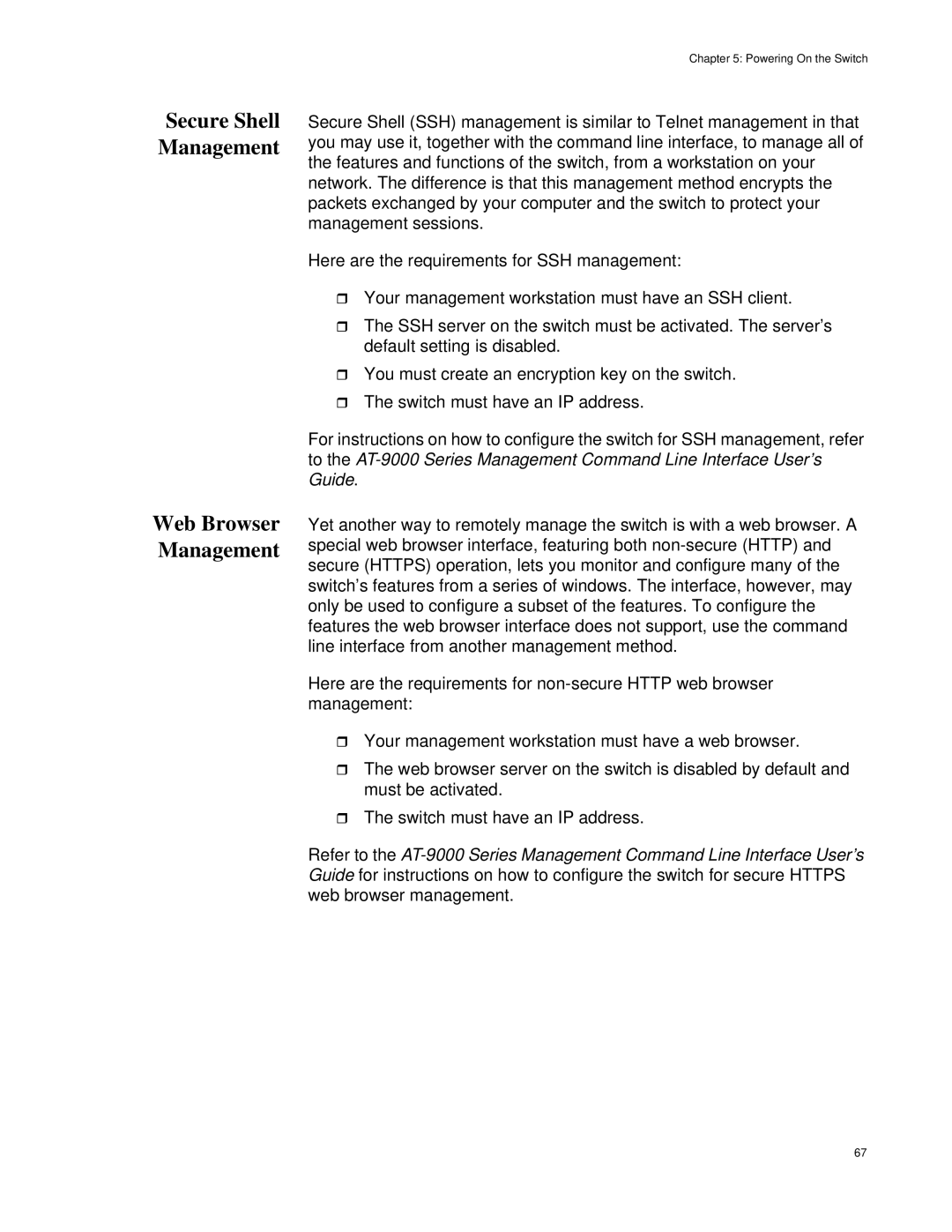Secure Shell Management
Web Browser Management
Chapter 5: Powering On the Switch
Secure Shell (SSH) management is similar to Telnet management in that you may use it, together with the command line interface, to manage all of the features and functions of the switch, from a workstation on your network. The difference is that this management method encrypts the packets exchanged by your computer and the switch to protect your management sessions.
Here are the requirements for SSH management:
Your management workstation must have an SSH client.
The SSH server on the switch must be activated. The server’s default setting is disabled.
You must create an encryption key on the switch.
The switch must have an IP address.
For instructions on how to configure the switch for SSH management, refer to the
Yet another way to remotely manage the switch is with a web browser. A special web browser interface, featuring both
Here are the requirements for
Your management workstation must have a web browser.
The web browser server on the switch is disabled by default and must be activated.
The switch must have an IP address.
Refer to the
67
